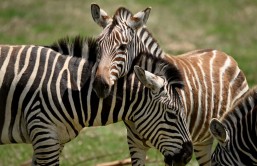Researchers determined that an ecological principle observed in animals can also be seen in the plant population.
In 1833 Constantin Wilhelm Lambert Gloger observed warm-blooded animals tended to be in darker in color the closer they lived to the equator, the University of Pittsburgh reported. New research suggests this phenomenon can also be seen in plants, providing insight into biological responses to global climate change.
Researchers studied flowers of Argentina anserina, a plant that is a member of the rose family. They studied samples across four lines of latitude -- three in the Northern and one in the Southern Hemisphere. Using ultraviolet imaging the researchers examined the "bulls eye" center of the flowers (which look dark to pollinators such as bees). They found these flower "bulls eyes" were larger when they grew closer to the equator; these are associated with higher rates of ultraviolet light.
The researchers hypothesized larger flower centers absorbed more ultraviolet light, which could be a protective trait to combat these DNA-damaging rays. The recent study confirmed extreme ultraviolet light reduces the viability of pollen in the flowers.
The findings are significant because they provide insight into the effects of global warming. Ozone depletion means flowers farther from the equator may begin developing this trait; this is problematic because a larger flower "bulls eye" means a smaller sweet center that provides sustenance to bees and other pollinators. This could pose a threat to the survival of these crucial species.
"Spring is coming earlier, and plants and pollinators are no longer in sync," said researcher Tia-Lynn Ashman. "Increased ultraviolet radiation is causing the same sort of disruption."
The findings were published in a recent edition of the journal Nature.








